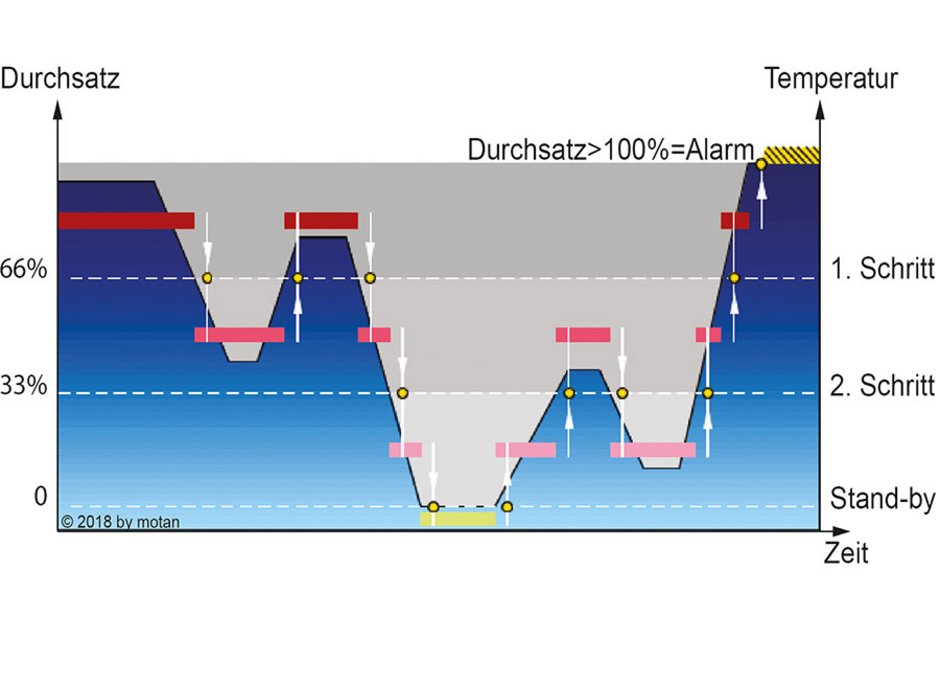57 - Avoiding material damage with changing throughputs

Changing throughputs for material drying can have serious consequences for the drying process. There are many triggers, for example production interruptions because of tool changes or when only a little material is needed for a job but the dryer used to dry it is too big.
When the material throughput is reduced but the other operation conditions remain the same (drying temperature and air flow), the temperature of the exhaust air increases at the drying bin. This results in the danger of material becoming damaged if it is stored in the bin for too long. Additionally, a lot of cooling energy may be required to cool the hotter exhaust air for dehumidifying in the dryer.
Reducing the fill level in the drying bin while the staying time remains the same also carries risks. A lower fill level in the bin can result in funnel flow of the material. Here, the material does not flow evenly as a mass flow but only in the middle above the outlet opening. Additionally, the exhaust air temperature would also rise in this case.
In order to react to changing material throughputs and to minimise the risk of over drying, automatic air flow, as described in Issue 54, is a suitable solution.
Another possibility is adjusting the drying temperature to the actual throughput. As one of the four drying parameters, changing this will also regulate the actual drying time (see Issue 15 “The four drying parameters”). Depending on the throughput, the program is continuously calculating the staying time of the material in the drying bin and optimises the drying temperature as and when needed.
If the system detects fluctuations of the throughout or detects that material is no longer required, it will reduce the drying temperature to the pre-set standby temperature. The actual drying time is adjusted to the actual staying time, the material is not heated unnecessarily and thermal damage to the material is avoided.
The already dried material remains dry and is ready for production at any point. Once production is restarted, the software automatically determines the required drying temperature based on consumption and changes it accordingly.
Additionally, the control can determine when a drying system is overloaded, for example when the drying time is too short due to consumption being too high or faulty supply. A warning will then occur.
The ideal solution is a combination of air flow regulation and regulation of the drying temperature. The interaction of both components enables fully automatic, reproduceable drying, suitable for the individual conditions.
You need the right equipment for your drying process? You can find it on www.motan.com
